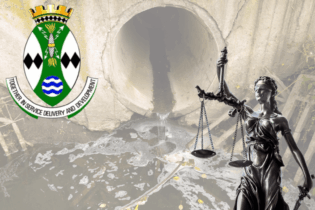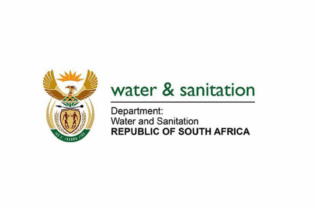The quality and safety of water aren’t affected just by major industrial pollutants or illegal dumping. Something as harmless-sounding as stormwater — the stuff that flows through streets and drains after it rains or the snow melts — can impair waterways when it carries erosion sediment, household waste and debris.
Some stormwater pollution is obvious. Two years ago, two people canoeing down the Assabet River in Concord noticed something suspicious flowing out of a broken drain pipe onto the riverbank and into the river. The water was milky-colored and had a foul odor. Alison Field-Juma, executive director of the Organization for the Assabet River, said the U.S. Environmental Protection Agency and the Massachusetts Department of Environmental Protection took water samples and found indicators of human waste. The culprit, it turned out, was undetected storm-drain connections from shower and kitchen drains in the Massachusetts Correctional Institution in Concord, which was required to fix the problem. Other problems aren’t so obvious, but include algae blooms resulting from lawn-fertiliser run-off, bacteria from animal waste, and toxic chemicals ending up untreated in the water. Under the federal Clean Water Act, the US EPA is charged with making sure cities and towns keep stormwater pollution out of the waterways. But how that requirement plays out in local communities has been a mess for a number of municipalities. “It’s an unfunded mandate, and it’s ridiculous,” said Gardner Mayor Mark P. Hawke, whose city was fined $60 000 by the EPA in 2008 for failure to comply with requirements for “municipal separate storm sewer systems,” or “MS4” communities under a regional permit issued in 2003. The city was cited in particular for not mapping all of its stormwater outfall pipes, according to Mr. Hawke. In 2010, city officials negotiated a $4 250 cash settlement with the EPA, for which Mr. Hawke established what he labeled an “extortion fund” and agreed to distribute 160 rain barrels to town residents and organizations. Voters at Uxbridge’s annual town meeting this May rejected a proposed stormwater management and erosion control bylaw, which members of the town’s Stormwater Control Committee had drafted as a bare-bones reflection of the EPA’s requirements and “best management practices.” The EPA’s MS4 regional permit requires municipalities to demonstrate public outreach and education; public involvement through activities such as household hazardous waste collection; adoption of bylaws or ordinances on “illicit discharge detection and elimination”; adoption of bylaws or ordinances on controlling construction-site runoff; adoption of bylaws or ordinances on post-construction stormwater control; and demonstration of municipal “good housekeeping,” such as clearing storm drains. The requirements apply to “urbanised areas” determined by the 2000 census, which may be just a part of a town such as Uxbridge. Uxbridge Director of Public Works Benn S. Sherman said, “We looked at a variety of municipalities in the area. We worked toward spring town meeting, and everybody was surprised (when it didn’t pass).” Stormwater Committee member Michael R. Potaski, who also serves on the Conservation Commission, said a previous attempt at a bylaw failed a few years ago because it was too expansive. “This time around we took the minimum necessary to adhere to EPA requirements,” he said. “We’ve got old-time Yankee landowners who fear government encroachment.” Mr. Potaski said he tried to tell people that the proposed stormwater control bylaw was nothing new, but rather codified what was already being done and established the legal authority to enforce it. He feared the town is at risk by not adopting a bylaw. “Ultimately EPA is going to fine the towns,” he said. “The idea of paying a fine for something we can do readily … it’s not going to be an easy thing to accommodate.” Thelma Murphy, chief of the Stormwater and Construction Permits section of the EPA’s regional office in Boston, said, “Failure to pass the ordinance or have the ordinance (or bylaw) in place is technically a violation of the permit. Violators would be subject to fines and penalties under the Clean Water Act.” Ms Murphy said that civil penalties up to $25 000 per day, per violation, could be assessed. Regional EPA Water Enforcement Manager Denny Dart said that more than 90 percent of communities that filed annual reports in 2011 (78 percent reporting rate) have adopted bylaws or ordinances to cover the three mandated areas: Illicit discharge detection and elimination; construction runoff on developments of an acre or more; and post-construction stormwater management.Although the majority of cities and towns have complied with the permit, others besides Uxbridge have turned down proposed bylaws.
A few years ago, Douglas voters rejected a construction-runoff bylaw at town meeting, and the town’s Planning Board and Conservation Commission have yet to come to terms on how to move forward. “People in town believed that our current bylaws covered it,” Town Engineer William J. Cundiff said. “They felt there wasn’t a need.” But others have adopted provisions that have been considered exemplary. Westboro Assistant Town Planner and Conservation Officer Derek Saari said that the town adopted two bylaws in 2008, one for illicit discharge and a general stormwater management bylaw. “I think people understood the reasoning behind it,” Mr. Saari said. Westboro also maintains more than 50 detention basins in town, and Mr. Saari has inspected 218 commercial, industrial and high-density residential sites to make sure they are complying with stormwater control rules. But he said the effort took a lot of work. “When you’re speaking to 218 people … that’s a massive amount of education. Considering it’s a massive unfunded mandate, Westboro’s doing great.” Holden’s Senior Engineer James M. Zingarelli said town meeting voters passed a stormwater bylaw in 2011 and an illicit discharge bylaw in May 2012. “It covers the basics,” he said. “It designates an authority, and it designates processes for review of plans.” While some towns are still struggling to comply with the 2003 MS4 permit, the EPA issued draft regulations for a new permit about two years ago that would include requirements to test the water at stormwater outfalls. “Fitting new requirements in budgets has been difficult, if not impossible,” said Spencer Town Administrator Adam Gaudette. Gaudette heads a group of 13 towns primarily in Southern Worcester County that received a $310 000 state Community Innovation Challenge Grant this spring to regionalize municipal stormwater management systems. Worcester, which was required to comply with the last MS4 permit earlier than the smaller towns, has adopted stormwater ordinances. But Robert J. Moylan Jr., commissioner of public works and parks, said when the proposed new requirements were released that they could cost the city more than $1 billion. “It lies somewhere in limbo,” Mr. Moylan said about the EPA’s impending new permit. Mr. Sherman said the Stormwater Committee will most likely expend more effort reaching out to Uxbridge residents this summer before possibly returning with another bylaw proposal at fall town meeting. “Personally, I just think people in the town need some education about it,” he said. Source: telegram.com







